Daoxian Ancient City: A Step Back in Time to Ancient Chinese Civilization
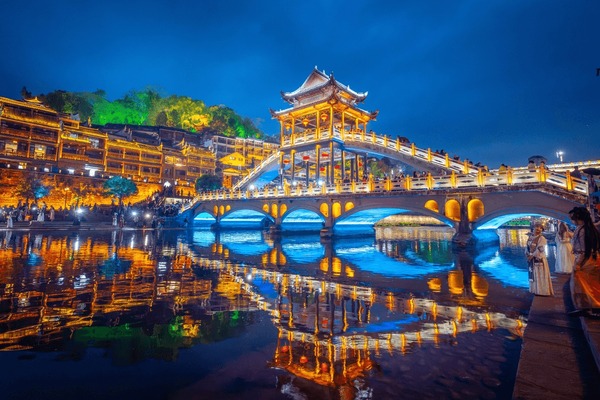
An Essential Guide to Visiting Daoxian Ancient City
In This Guide
- An Essential Guide to Visiting Daoxian Ancient City
- The Rich History and Legends of Daoxian Ancient City
- Main Highlights: What You Absolutely Can’t Miss
- Planning Your Visit: A Practical Guide
- Tickets: Prices, Booking, and Tips
- How to Get There: A Complete Transportation Guide
- Local Cuisine and Accommodation Nearby
- Frequently Asked Questions
- Final Thoughts on Your Trip
Nestled in the picturesque landscape of Hunan Province, Daoxian Ancient City (永州道县濂溪故里·月岩) invites travelers on a journey through time, where the echoes of history resonate with every step. This charming ancient city, steeped in rich cultural heritage, serves as a vibrant tapestry of China’s past, showcasing the remarkable contributions of the Li River culture and the profound influence of renowned scholars, particularly the revered poet Li Bai.
As you meander through the city’s narrow cobblestone streets, you’ll be transported to an era where traditional architecture and serene landscapes harmoniously blend. The city’s historical significance is accentuated by its well-preserved structures, which stand as testaments to the architectural ingenuity of ancient China. Here, visitors can explore ancient residences, temples, and cultural relics that narrate the stories of generations long past.
Highlights of Daoxian Ancient City include:

Daoxian Ancient City.
-
Li Bai Memorial Hall: A dedicated homage to the legendary poet, this hall offers insights into his life and work, showcasing artifacts and exhibits that celebrate his enduring legacy.
-
Stunning Natural Scenery: Daoxian is not only known for its historical allure but also for its breathtaking surroundings, including lush mountains and tranquil waters that create a picturesque backdrop for exploration.
-
Local Cuisine: Savor the flavors of Hunan’s culinary traditions in the city’s bustling markets and charming eateries, where local dishes tantalize the taste buds and offer a glimpse into the region’s gastronomic heritage.
-
Cultural Festivals: Experience the vibrant local culture through various festivals and events held throughout the year, where traditional music, dance, and art come alive in celebration of Daoxian’s rich heritage.
For those seeking a deeper understanding of Chinese history and culture, Daoxian Ancient City is an unmissable destination. Whether you are wandering through its ancient streets, indulging in its delectable cuisine, or immersing yourself in its cultural experiences, Daoxian promises to leave an indelible mark on your travel memories. Prepare to embark on an unforgettable adventure in one of China’s hidden gems!
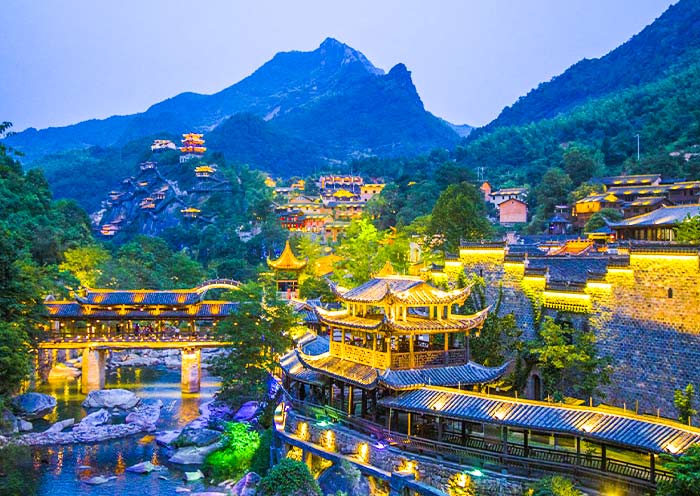
Daoxian Ancient City.
The Rich History and Legends of Daoxian Ancient City
Exploring the Historical Tapestry of Daoxian Ancient City
Nestled in the enchanting landscape of Hunan Province, Daoxian Ancient City (道县濂溪故里·月岩) is a remarkable destination steeped in rich history and captivating legends. Its origins can be traced back over 2,000 years, making it a treasure trove for historians and cultural enthusiasts alike. With its unique blend of ancient architecture, folklore, and natural beauty, Daoxian invites travelers to step back in time and uncover the stories that shaped this remarkable locale.
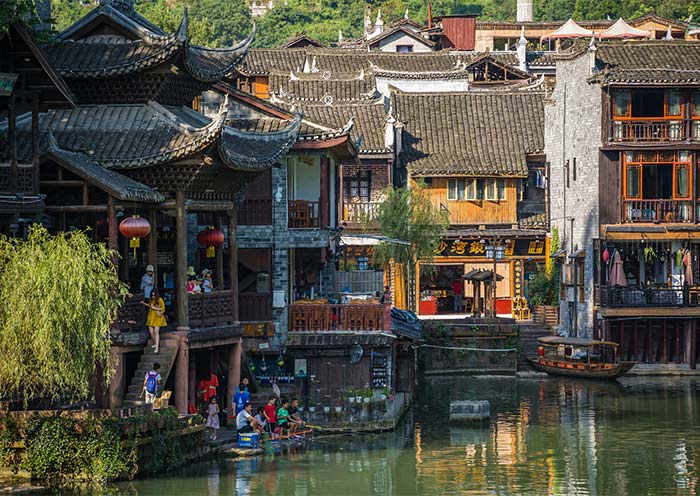
Daoxian Ancient City.
A Historical Overview
Daoxian has long been a vital hub in the region, serving as a center for trade and cultural exchange since the Han Dynasty. The city was strategically positioned along key trade routes, facilitating interactions between various ethnic groups and fostering economic prosperity. Throughout its history, Daoxian has witnessed the rise and fall of dynasties, each leaving an indelible mark on its cultural identity.
One of the city’s most notable historical contributions is its association with the renowned poet and philosopher Li Bai (Li Po), who is celebrated for his profound influence on Chinese literature. His connection to Daoxian highlights the city’s role as a cultural beacon during the Tang Dynasty, a period marked by artistic and intellectual flourishing.
Legends and Folklore
Daoxian is not just a repository of historical facts; it is also steeped in enchanting legends that add a layer of mystique to its allure. Among the most famous is the tale of the “Moon Rock” (月岩), a prominent natural formation that has inspired countless stories and poems. According to local folklore, the rock is said to house the spirit of an ancient goddess who blesses the land with prosperity and harmony. Each year, during the Mid-Autumn Festival, locals gather to honor this goddess, offering mooncakes and prayers in hopes of receiving her blessings.
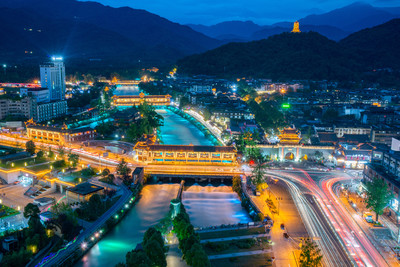
Daoxian Ancient City.
Another captivating legend revolves around the “Three Sisters of Daoxian,” three beautiful maidens who are said to have lived in the area centuries ago. Their kindness and wisdom were legendary, and they are often depicted as protectors of the city, aiding travelers and ensuring safe passage through the surrounding mountains. This tale is celebrated in local festivals, where performances and reenactments bring the legend to life, captivating both locals and visitors.
Architectural Wonders
The architectural landscape of Daoxian is a testament to its rich history, with well-preserved structures that reflect the city’s diverse cultural influences. The ancient city walls, dating back to the Ming Dynasty, provide a glimpse into the city’s defensive strategies and social organization. Walking along these walls offers a unique perspective on the city’s historical significance and its role as a bastion of culture.
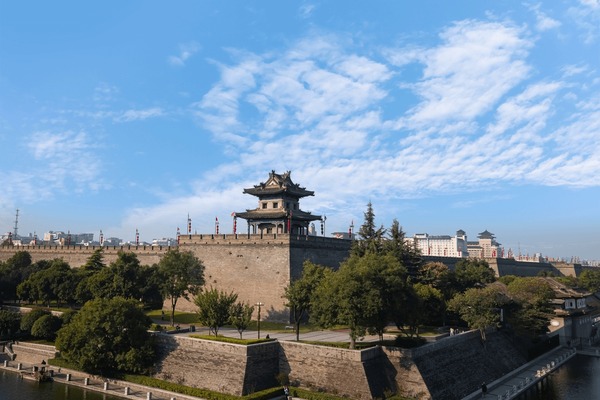
Daoxian Ancient City.
Additionally, the intricately designed temples and pavilions scattered throughout Daoxian showcase traditional Chinese architectural styles, embodying the spiritual and cultural ethos of the region. Visitors can explore these sites, each telling its own story of devotion and artistry, further enriching their understanding of Daoxian’s historical narrative.
Conclusion
Daoxian Ancient City is more than just a historical site; it is a vibrant tapestry woven from the threads of time, culture, and legend. With its rich heritage, enchanting stories, and stunning architecture, Daoxian offers international travelers an unparalleled opportunity to engage with the deep historical roots and cultural narratives of China. Whether you are wandering through its ancient streets or immersing yourself in local folklore, Daoxian promises an unforgettable journey into the heart of Chinese history and culture.
Main Highlights: What You Absolutely Can’t Miss
Daoxian Ancient City, nestled in the picturesque region of Yongzhou, is a treasure trove of history and culture, offering visitors a unique glimpse into the past. Here are the main highlights you simply cannot miss during your visit:

Daoxian Ancient City.
1. The Ancient City Walls
The first step into Daoxian Ancient City is like stepping back in time, especially as you stroll along its remarkably preserved ancient city walls. Dating back to the Ming Dynasty, these walls served as a defense system and are built using local stone and bricks. The panoramic views from the top provide a stunning backdrop of the surrounding landscape, making it an ideal spot for photography.
2. Li Fan’s Former Residence
Home to the famed scholar and poet Li Fan, this residence is a must-visit for literature enthusiasts. The architecture reflects traditional Southern Chinese styles, and the tranquil gardens surrounding the house invite visitors to explore the life and works of this influential figure. The exhibits provide insight into the cultural and historical context of his time.

Daoxian Ancient City.
3. The Moon Rock (月岩)
One of the most iconic natural attractions in Daoxian, the Moon Rock is a stunning geological formation that resembles a crescent moon. Legend has it that this rock holds mystical powers and is a spot for locals to perform rituals. A hike to the rock offers breathtaking views of the surrounding hills and valleys, making it a perfect escape for nature lovers.
4. The Confucian Temple
This temple, dedicated to Confucius, stands as a testament to the importance of education and philosophy in Chinese culture. The intricate carvings and detailed architecture reflect the reverence for Confucian ideals. Visitors can participate in traditional ceremonies and learn about the educational practices that have shaped Chinese society for centuries.
5. Gourd Mountain (葫芦山)
For those seeking adventure, Gourd Mountain presents an exhilarating hiking experience. The trails lead to stunning vistas, ancient trees, and serene temples. This location is not only a natural wonder but also a site of historical significance, as it has been a pilgrimage destination for centuries.
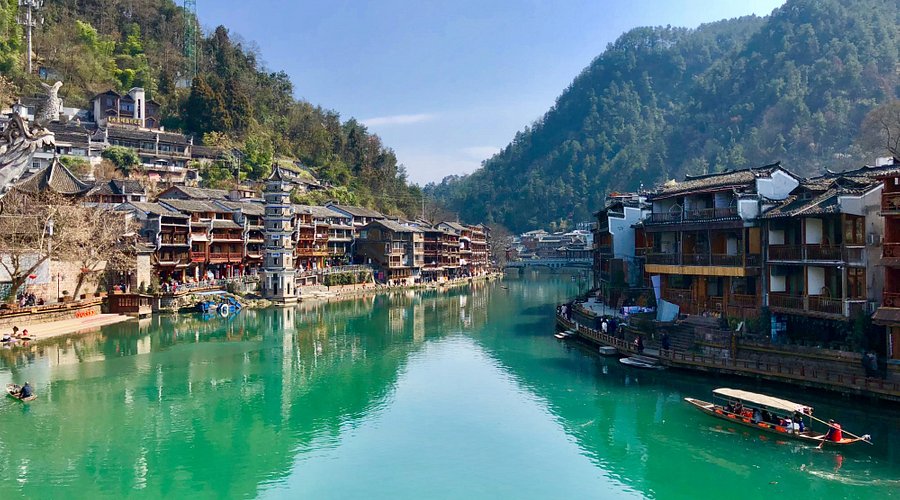
Daoxian Ancient City.
6. Local Cuisine
No visit to Daoxian is complete without indulging in its culinary delights. Sample traditional dishes such as Daoxian Rice Noodles and Yongzhou Steamed Buns, which embody the region’s rich culinary heritage. Explore the local markets and street stalls for an authentic taste of Daoxian’s flavors, and don’t forget to try the locally brewed teas, which are renowned for their unique flavors.
7. Cultural Festivals
If your visit coincides with one of Daoxian’s vibrant cultural festivals, seize the opportunity to immerse yourself in local traditions. Events often include traditional performances, art exhibitions, and culinary showcases that celebrate the region’s rich heritage. These festivals are not only entertaining but also provide a deeper understanding of the local culture.
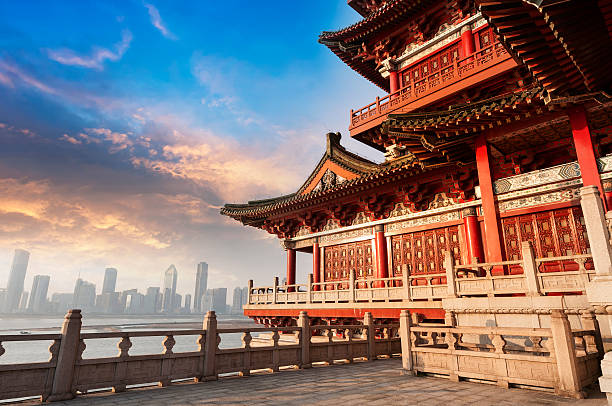
Daoxian Ancient City.
8. The Daoxian Museum
To round out your exploration, a visit to the Daoxian Museum is essential. It houses a variety of artifacts that chronicle the history of the area, from ancient relics to contemporary art. The museum’s exhibits are thoughtfully arranged, providing a comprehensive overview of Daoxian’s cultural evolution.
Conclusion
Daoxian Ancient City is a captivating blend of history, culture, and natural beauty. Whether you are wandering through ancient streets, savoring local delicacies, or exploring historical sites, each experience offers a deeper connection to China’s rich heritage. Make sure to include these highlights in your itinerary for an unforgettable journey through time.
Planning Your Visit: A Practical Guide
Essential Information for Your Visit to Daoxian Ancient City
Overview
Nestled in the heart of Hunan Province, Daoxian Ancient City (永州道县濂溪故里·月岩) offers a captivating glimpse into China’s rich history and cultural heritage. Renowned for its picturesque landscapes and ancient architecture, this destination is perfect for international travelers eager to explore China’s storied past. To ensure a smooth and memorable experience, here’s a comprehensive guide to planning your visit.
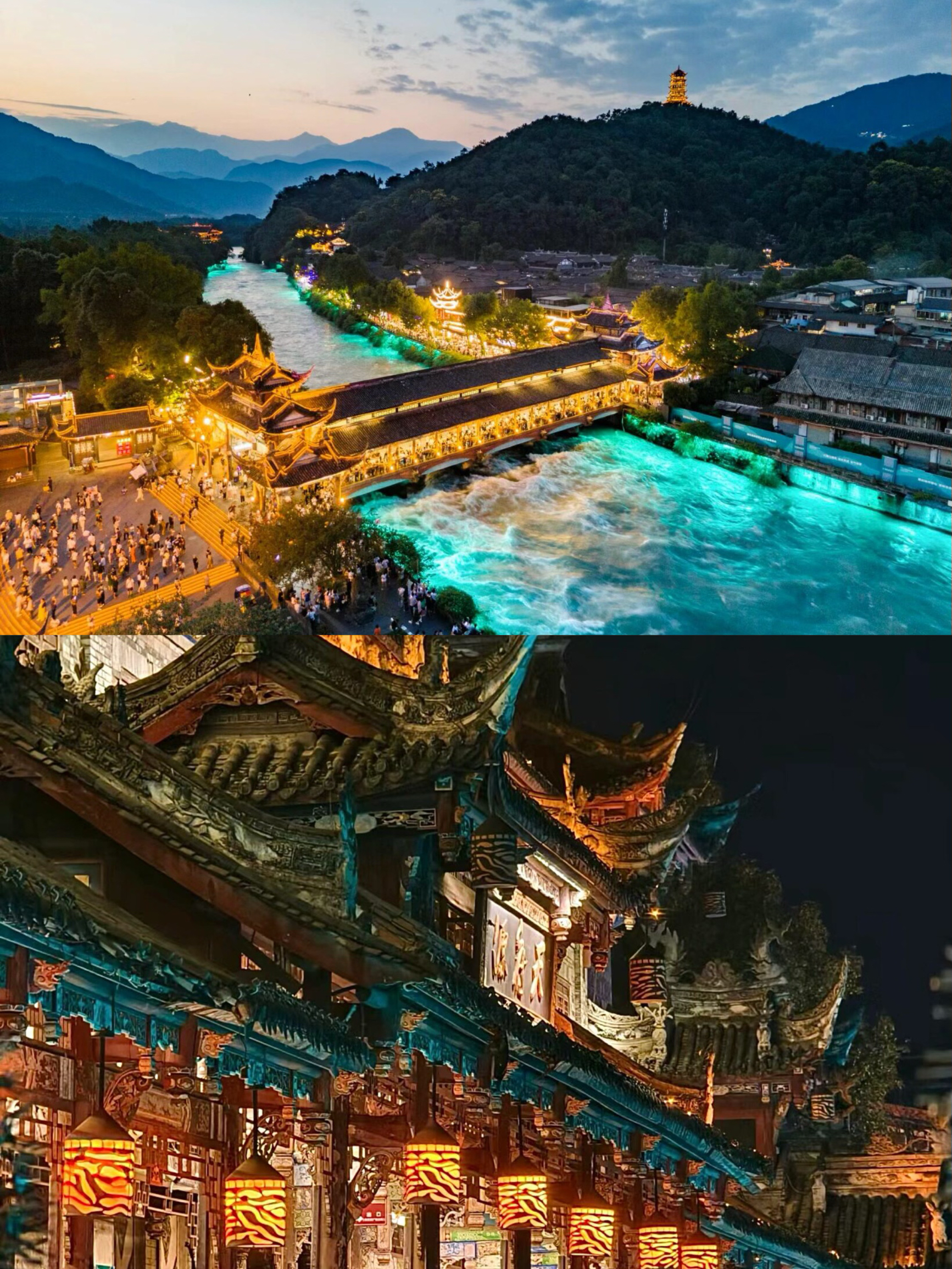
Daoxian Ancient City.
Best Time to Visit
The ideal time to explore Daoxian Ancient City is during the spring (March to May) and autumn (September to November) months. During these periods, the weather is mild, making it perfect for outdoor activities and sightseeing. Summers can be hot and humid, while winters may bring cooler temperatures, so pack accordingly.
Getting There
- By Air: The nearest major airport is in Yongzhou, which is approximately 25 kilometers from Daoxian. From there, you can take a taxi or arrange for a hotel pickup.
- By Train: Daoxian is accessible via train services from major cities in Hunan. The Daoxian Railway Station connects to regional and national train lines, making travel convenient.
- By Bus: Buses frequently run from nearby cities, including Yongzhou, to Daoxian. This is a cost-effective option for budget travelers.
Transportation Within Daoxian
- Walking: The ancient city is best explored on foot. Strolling through its narrow alleys will allow you to soak in the historical ambiance.
- Bicycles: Renting a bicycle can be a delightful way to cover more ground and enjoy the scenic views.
- Taxis and Ride-Sharing: Taxis are available, but it’s advisable to have your destination written in Chinese, as many drivers may not speak English.

Daoxian Ancient City.
Accommodations
Daoxian offers a range of accommodation options, from budget hostels to more luxurious hotels. Consider staying within the ancient city to fully immerse yourself in the local culture. Here are some recommendations:
– Heritage Hotels: Experience traditional Chinese hospitality in a heritage hotel that showcases local architecture.
– Boutique B&Bs: For a more intimate experience, opt for a boutique bed and breakfast run by local families.
Culinary Delights
Savoring local cuisine is a must when visiting Daoxian. Be sure to try:
– Hunan Cuisine: Known for its bold flavors and spicy dishes, Hunan cuisine offers a culinary adventure. Don’t miss the famous steamed fish with chili or spicy stir-fried vegetables.
– Street Food: Sample local snacks like rice cakes and grilled meats from street vendors for an authentic experience.
– Tea Culture: Hunan is also known for its tea. Visit a local tea house to learn about traditional tea preparation and enjoy tastings.
Attractions and Activities
- Historical Sites: Explore ancient temples, pagodas, and traditional architecture that reflect the city’s storied past.
- Cultural Festivals: If your visit coincides with local festivals, participate in traditional celebrations that showcase music, dance, and art.
- Nature Walks: Take advantage of the beautiful surroundings with guided hikes or self-directed strolls through scenic areas.
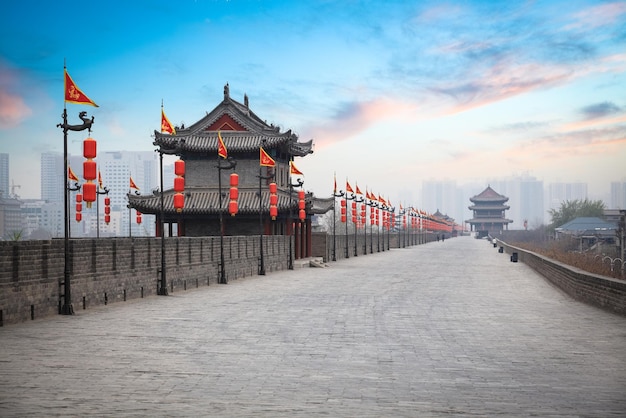
Daoxian Ancient City.
Practical Tips
- Language: While some locals may speak basic English, it’s beneficial to learn a few essential Mandarin phrases or use a translation app.
- Currency: The local currency is the Chinese Yuan (CNY). Credit cards are accepted in larger establishments, but it’s wise to carry cash for smaller vendors.
- Dress Code: Dress modestly when visiting religious sites, and wear comfortable shoes for exploring the ancient city.
Conclusion
Daoxian Ancient City is a treasure trove for those interested in Chinese history and culture. By following this practical guide, you can ensure a fulfilling and enriching experience as you delve into the wonders of this ancient locale. Prepare for a journey filled with discovery, culinary delights, and unforgettable memories. Safe travels!
Tickets: Prices, Booking, and Tips
Discovering Daoxian Ancient City: Ticketing Information and Travel Tips
When planning your visit to Daoxian Ancient City (永州道县濂溪故里·月岩), it’s essential to understand the ticketing process to enhance your cultural experience. This historical gem, rich in Chinese heritage, offers a unique glimpse into the past, making it a must-visit for history enthusiasts and cultural explorers alike.
Ticket Prices
- General Admission:
- Adult Ticket: Approximately ¥50 (around $8 USD)
- Student Ticket: Approximately ¥30 (around $5 USD), valid with a student ID.
-
Children Under 12: Free admission.
-
Guided Tours:
-
Private Tour Options: Prices vary based on group size and inclusions, typically ranging from ¥200 to ¥600 (approximately $30 to $90 USD) per group.
-
Special Exhibitions:
- Occasionally, there are temporary exhibitions with separate ticket pricing, usually around ¥20 (about $3 USD).
Booking Tickets
- Online: Tickets can be conveniently purchased through various travel platforms, such as Trip.com and other ticketing websites. Booking in advance is recommended, especially during peak tourist seasons.
- On-Site: Tickets are available at the entrance of Daoxian Ancient City. However, be prepared for potential queues during busy times.
Tips for Your Visit
-
Best Time to Visit: The ideal months to explore Daoxian Ancient City are from April to June and September to November. The weather is generally mild, and the scenery is particularly beautiful during these periods.
-
Transport Options:
- Public Transport: Buses frequently run from nearby cities to Daoxian. Look for local buses that head towards the ancient city.
-
Taxi Services: Taxis are a convenient option if you prefer a more direct route. Ensure to have your destination written in Chinese to avoid miscommunication.
-
What to Bring:
- Comfortable walking shoes are a must, as you’ll likely spend several hours exploring the city’s numerous historical sites.
- A camera is essential for capturing the breathtaking architecture and landscapes.
-
A water bottle and snacks, particularly if you plan to spend the day immersing yourself in the rich cultural offerings.
-
Local Etiquette: When visiting temples and historical sites, remember to be respectful. Dress modestly and refrain from loud conversations to maintain the serene atmosphere.
-
Cultural Experiences: Consider joining a guided tour that includes traditional performances, local cuisine tastings, or hands-on workshops related to ancient crafts. These experiences will deepen your understanding of Daoxian’s historical significance.
By planning ahead and following these tips, your visit to Daoxian Ancient City will not only be enjoyable but will also provide you with a profound appreciation of China’s rich history and culture. Enjoy your journey through time!
How to Get There: A Complete Transportation Guide
Navigating Your Way to Daoxian Ancient City
Daoxian Ancient City (永州道县濂溪故里·月岩) is a captivating destination nestled in the heart of Hunan Province, steeped in rich Chinese history and culture. With its stunning landscapes and historical significance, getting to Daoxian is an adventure in itself. Here’s your comprehensive guide to navigating the transportation options available for international travelers.
1. Arriving by Air
The nearest major airport to Daoxian is Yongzhou Lingling Airport (YZY), which is approximately 30 kilometers from the ancient city. While this airport primarily serves domestic flights, it connects to larger hubs such as Changsha Huanghua International Airport (CSX). For international travelers, the best approach is to fly into Changsha and then make your way to Daoxian.
Flight Options:
– From North America or Europe: Major airlines offer flights to Changsha with one or more stopovers. Look for connections through cities like Beijing, Shanghai, or Guangzhou.
– From other Chinese cities: Frequent flights from cities like Beijing, Shanghai, and Guangzhou will take you directly to Changsha.
2. From Changsha to Daoxian
Once you arrive at Changsha Huanghua International Airport, you have several options to reach Daoxian:
A. By Train
– High-Speed Train: High-speed trains are available from Changsha South Railway Station to Yongzhou Railway Station, which is about 40 kilometers from Daoxian. The journey takes around 2 hours.
– Regular Train: Slower regular trains are also an option, taking about 3 to 4 hours.
B. By Bus
– Long-Distance Bus: Buses depart from the Changsha West Bus Station to Daoxian directly. The bus ride typically takes around 3.5 to 4 hours.
C. By Taxi or Ride-Sharing
– If you prefer a more direct and comfortable route, consider hiring a taxi or using a ride-sharing service. The drive from Changsha to Daoxian takes approximately 3 hours, depending on traffic.
3. Local Transportation in Daoxian
Once you arrive in Daoxian, getting around the ancient city and its attractions is relatively straightforward:
A. Walking
– The compact nature of Daoxian Ancient City makes it easy to explore on foot. Many historical sites, shops, and eateries are within walking distance.
B. Bicycles and E-bikes
– Renting a bicycle or e-bike can be a delightful way to explore the scenic surroundings at your own pace.
C. Local Taxis and Ride-Hailing
– For longer distances or if you prefer not to walk, local taxis are readily available. Additionally, popular ride-hailing apps operate in the area, providing convenient transport options.
4. Best Time to Visit
The ideal time to visit Daoxian is during the spring (March to May) and autumn (September to November) months when the weather is mild and perfect for sightseeing. The summer can be quite hot, while winter temperatures can drop significantly.
5. Helpful Tips
- Language: English is not widely spoken in Daoxian, so it’s advisable to have a translation app handy or learn a few basic Mandarin phrases.
- Currency: Ensure you have access to Chinese Yuan (CNY) for local transactions, as many places may not accept credit cards.
- Local Cuisine: Don’t miss out on trying local delicacies at nearby eateries; it’s a significant part of the cultural experience!
In conclusion, reaching Daoxian Ancient City is a journey filled with opportunities to immerse yourself in the cultural richness of Hunan Province. Whether you arrive by air, train, or bus, the allure of this historical city awaits you. Enjoy your adventure!
Local Cuisine and Accommodation Nearby
Daoxian Ancient City, nestled in the picturesque region of Hunan, is not only a feast for history enthusiasts but also a culinary paradise. The local cuisine reflects the rich culture and traditions of the area, while accommodations range from charming guesthouses to modern hotels, ensuring a comfortable stay for travelers. Here’s your guide to savoring the flavors of Daoxian and finding the perfect place to rest after your explorations.
Culinary Delights of Daoxian
1. Yungui Cuisine
Daoxian is renowned for its Yungui (永桂) cuisine, which emphasizes the use of fresh, local ingredients. Expect to savor dishes that highlight the region’s agricultural bounty, including:
- Stir-fried River Fish: Freshly caught from local streams, this dish is typically seasoned with garlic and chili, giving it a zesty flavor.
- Spicy Pickled Vegetables: A staple in many meals, these pickled delights provide a tangy contrast to the rich dishes.
- Crispy Pork Belly: Slow-cooked to perfection, this dish is a must-try for meat lovers, often served with a side of fragrant rice.
2. Traditional Snacks
Don’t miss out on local snacks such as:
- Daoxian Rice Noodles (道县米粉): Soft and chewy, these noodles are often served in a savory broth or stir-fried with seasonal vegetables and meats.
- Sesame Cakes: A delightful treat, these cakes are filled with sweet red bean paste and coated in sesame seeds, perfect for a quick snack.
3. Local Markets
For an authentic experience, visit the local food markets where you can sample street food and fresh produce. The bustling atmosphere and vibrant colors make it a perfect spot to immerse yourself in the local culture.
Accommodation Options
After indulging in the flavors of Daoxian, you’ll want a cozy place to unwind. Here are some recommendations:
1. Daoxian Ancient City Hotel (道县古城酒店)
– Description: This hotel offers a blend of traditional architecture with modern amenities. Located near the heart of the ancient city, it provides easy access to local attractions.
– Features: Free Wi-Fi, an on-site restaurant serving local dishes, and comfortable rooms with stunning views of the ancient city.
2. Hunan Yungui Guesthouse (湖南永桂客栈)
– Description: A charming guesthouse that offers a more intimate experience. It’s beautifully decorated with traditional Hunan elements and is perfect for travelers looking for a homey atmosphere.
– Features: Personalized service, home-cooked meals, and cozy rooms equipped with all necessary amenities.
3. Daoxian International Hotel (道县国际酒店)
– Description: For those seeking luxury, this hotel features modern facilities and excellent service. It’s slightly further from the ancient city but offers a tranquil setting amidst nature.
– Features: A full-service spa, fitness center, and a restaurant that serves a mix of local and international cuisine.
Conclusion
Exploring Daoxian Ancient City is as much about savoring the local cuisine as it is about delving into its rich history. With its mouthwatering dishes and comfortable accommodations, this charming destination promises an unforgettable experience for travelers seeking to immerse themselves in Chinese culture. Whether you’re feasting on spicy river fish or resting in a quaint guesthouse, Daoxian invites you to discover its unique flavors and hospitality.
Frequently Asked Questions
Frequently Asked Questions about Daoxian Ancient City
1. What is Daoxian Ancient City known for?
Daoxian Ancient City, located in the picturesque Dao County, is famed for its rich historical significance and cultural heritage. It is recognized for its well-preserved ancient architecture, traditional customs, and its unique connection to famous historical figures such as the renowned poet Li Bai. Visitors can explore charming streets, ancient temples, and refreshing natural landscapes that tell the story of China’s past.
2. How do I get to Daoxian Ancient City?
Traveling to Daoxian Ancient City can be done by various means. The nearest major city is Yongzhou, which is well-connected by train and bus services. From Yongzhou, you can take a local bus or taxi to reach Daoxian. Additionally, it’s advisable to check local transportation schedules and options for a seamless journey.
3. What are the best times to visit Daoxian Ancient City?
The ideal times to visit Daoxian are during spring (March to May) and autumn (September to November) when the weather is mild and comfortable for exploring. These seasons also showcase the natural beauty of the surrounding landscapes, making it a perfect backdrop for your visit.
4. Are there any entrance fees for attractions in Daoxian Ancient City?
Many of the historical sites and attractions in Daoxian, such as temples and scenic parks, have low entrance fees or are free to visit. However, it’s advisable to check specific attractions in advance for any potential fees, especially for guided tours or special exhibits.
5. What local foods should I try while visiting Daoxian?
Daoxian offers a delightful variety of local cuisine that reflects the region’s cultural heritage. Be sure to try specialties like Daoxian rice noodles, which are often served with rich broths, as well as steamed dumplings and various spicy pickled vegetables. Don’t miss out on sampling local teas, which are integral to the area’s tradition.
6. Is English widely spoken in Daoxian?
While English is not as commonly spoken in Daoxian compared to larger cities, many locals, especially in hospitality and tourist services, can communicate basic English. Having a translation app or a phrasebook can be helpful for more in-depth interactions.
7. What accommodation options are available in Daoxian?
Daoxian offers a range of accommodation options, from budget hostels to mid-range hotels. For a more authentic experience, consider staying at a local guesthouse where you can immerse yourself in the regional culture and hospitality. Booking in advance is recommended, especially during peak tourist seasons.
8. What cultural etiquette should I be aware of when visiting Daoxian?
When visiting Daoxian, it’s important to be respectful of local customs. Dress modestly, especially when visiting temples and religious sites. It’s customary to greet locals with a smile and a nod. Additionally, learning a few basic Mandarin phrases can go a long way in fostering goodwill and connection with the community.
Final Thoughts on Your Trip
As you wrap up your journey through Daoxian Ancient City, take a moment to reflect on the rich tapestry of history and culture you have experienced. This remarkable destination, nestled in the heart of China’s historical landscape, offers a unique glimpse into the past, intertwined with the vibrant present.
Memorable Highlights:
– Ancient Architecture: Stroll through the well-preserved streets, where every corner tells a story, and admire the intricate designs of age-old structures.
– Cultural Insights: Engage with local artisans, taste traditional dishes, and absorb the serene atmosphere that has inspired poets and philosophers for centuries.
– Natural Beauty: Venture beyond the city walls to explore the stunning landscapes that surround Daoxian, from lush mountains to tranquil rivers.
Final Reflections:
Your visit to Daoxian Ancient City is not just a journey through time; it is an invitation to connect with the spirit of Chinese civilization. The echoes of history resonate through its landscapes, reminding us of the enduring legacies of those who came before us. As you leave, carry with you the stories shared, the flavors tasted, and the beauty witnessed.
In a world that often rushes forward, Daoxian stands as a testament to the importance of understanding our roots. May your travels continue to inspire a deeper appreciation for the history and culture that shape our global narrative. Safe travels, and may your next adventure be just as enriching!